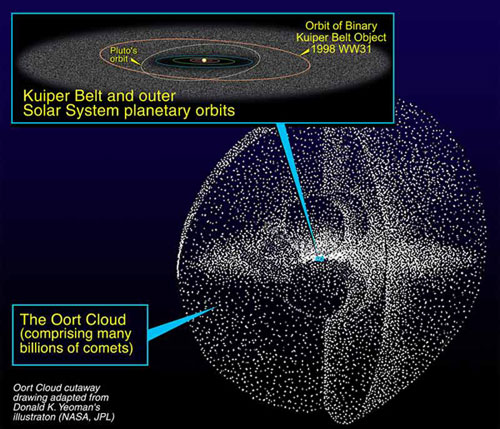
 |
Comets follow interesting paths around the Sun. Short-period comets (e.g. Halley's comet) complete their orbits in less than a few hundreds years while long-period comets, (e.g. Hale-Bopp) take many thousands of years to do so. Surprisingly, short-term comets are found roughly in the plane of the Solar System while long-period comets approach the Sun randomly from all directions. This was the first evidence for two separate reservoirs of comets. The Kuiper Belt (pronounced KI-per), a flattened disk of bodies beyond the orbit of Neptune, produces the short-period comets and the Oort Cloud, a spherical distribution of bodies at much greater distances, produces the long-period comets.